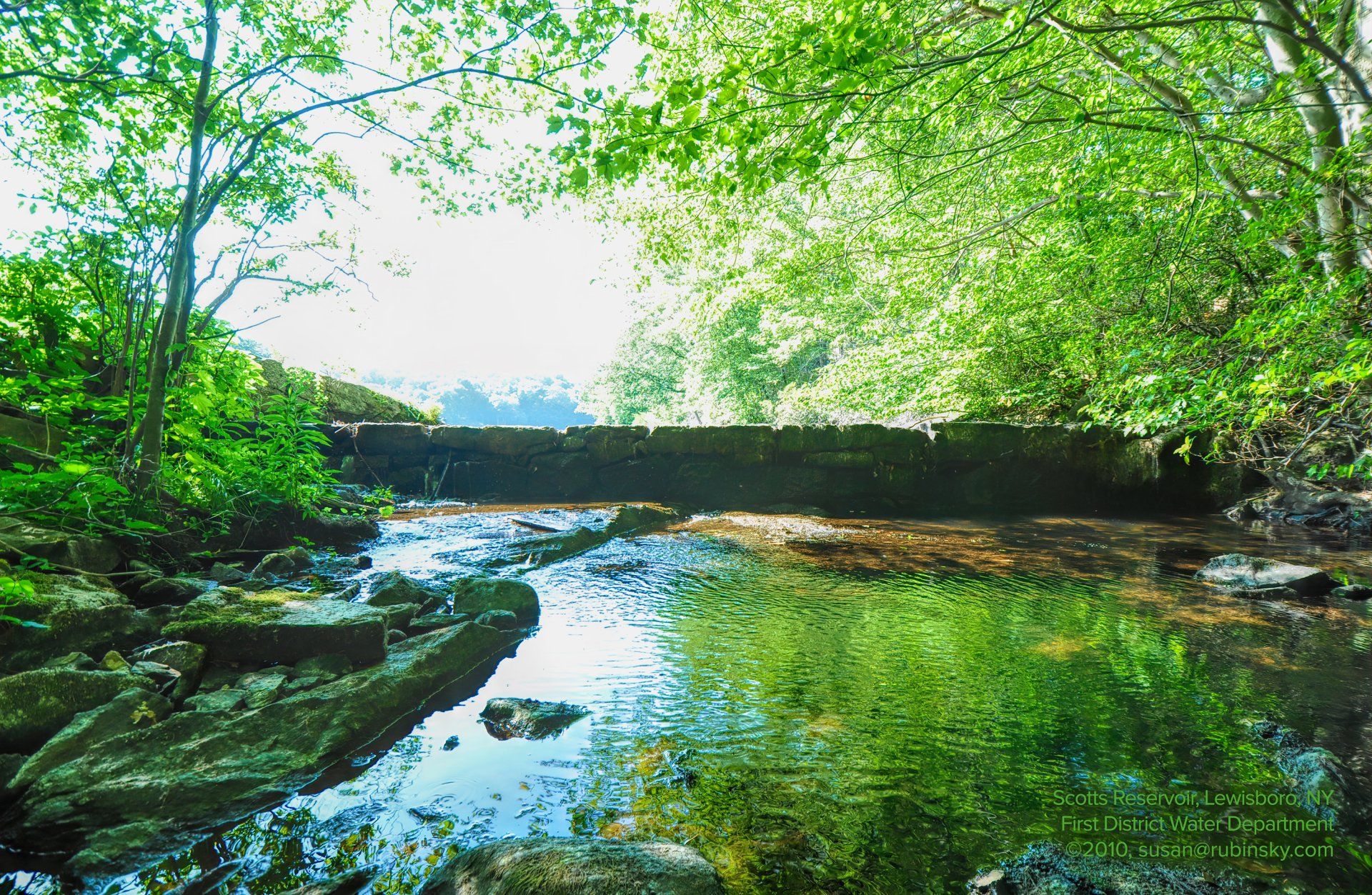Report an Emergency: 203-847-7387
Land Management
Land Management
Within the watershed, along the Silvermine River Basin, the land is preserved and protected.
Hardwoods and pine trees grow from the hardy, stony, and rich brown soil. It is a verdant—but fragile—area, dependent on the same streams where we collect our drinking water.
The very processes that sustain the growth within this watershed ensure that our water is naturally purified as it roils through clean rocks, roots, and soil, following gravity’s pull downstream towards our reservoirs. These reservoirs gather fresh water into vibrant pools, reflecting each season’s hues—the deep, fertile greens of summer, the brilliant oranges, reds, and yellows of autumn, the stark white and gray of winter, and back again to the pale pastel blossoms and greens of spring.
Scotts Reservoir, Lewisboro, NY
Collectively, however, our four reservoirs represent much more than just a pretty picture; the water they hold amounts to some one billion gallons, serving more than 40,000 households in Norwalk, New Caanan, Wilton, and Westport.
There’s more to our land holdings than meets the eye. Below the forest floor, underfoot, water percolates and filters downward, some reaching the reservoirs at depth, but much continuing deeper into the earth, pooling against hard rock in aquifers.
These aquifers—subterranean rock ledges and caverns that hold water—contain reserves of naturally filtered water that can be sourced at our Kellog-Deering Wellfield during times of excessive use or drought. At such times, when use exceeds reservoir replenishment, the FDWD draws water from our wells, disinfects it and blends it with water that has been treated at our filtration facility. In this way, ground water helps to maintain healthy reservoir levels during dry weather.
Report an Emergency
Calls outside of regular business hours will be attended to by our 24/7 emergency phone service.



